Once again, San Miguel de Allende has captured global attention, winning Travel + Leisure’s World’s Best City 2025 award—the fourth time in eight years this UNESCO World Heritage colonial gem has topped the rankings. But behind the celebration lies a complex story of transformation, with significant implications for both visitors planning their next trip and residents navigating life in what many now call the “golden cage” of Mexican tourism success.
The Award Announcement & Global Recognition
On July 8, 2025, Travel + Leisure unveiled its annual World’s Best Awards results, placing San Miguel de Allende at the top of the “World’s Best Cities” category. The ranking came after surveys from over 700,000 readers worldwide, who evaluated destinations based on culture, friendliness, food, shopping, and overall experience. This marks the fourth time since 2017 that San Miguel has claimed the top spot, joining previous wins in 2017, 2018, and 2024.
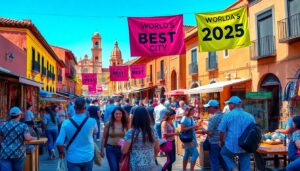
The prestigious recognition comes alongside several other accolades for the city. Rosewood San Miguel de Allende was simultaneously named the Best Hotel in Mexico for the fifth consecutive year, while the city continues to hold Condé Nast Traveler’s No. 1 Small City in the World designation from previous years.
How Travel + Leisure’s Ranking Actually Works
Understanding the methodology behind this prestigious award reveals why San Miguel consistently dominates. Travel + Leisure’s World’s Best Awards survey, now in its 30th year, invites frequent travelers to rate destinations across multiple criteria. The 2025 survey was conducted over four months and promoted through the magazine’s print, digital, newsletter, social media, and website platforms.
Readers evaluate cities based on:
- Cultural attractions and activities
- Food scene and restaurant quality
- Friendliness of locals
- Shopping opportunities
- Overall travel experience and value
San Miguel’s consistent wins reflect its ability to excel across all these categories, particularly its blend of colonial architecture, vibrant arts scene, and strong expat community creating a uniquely welcoming atmosphere for international visitors.
Immediate Impact: What’s Already Changed
The award announcement has triggered immediate and measurable changes across San Miguel’s tourism landscape. According to 2025 short-term rental data, the city now hosts over 3,000 active Airbnb listings with an average occupancy rate of 41% and average daily rates of $106 USD.
Hotel Rates and Booking Surge
Hotel occupancy has spiked dramatically since the award announcement. Premium properties like Casa de Sierra Nevada and Hotel Matilda are reporting booking increases of up to 35% for the remainder of 2025. Average hotel rates in San Miguel now range from $43 for budget properties to over $500 for luxury suites during peak periods.
The award timing—just before peak summer travel season—has created an immediate booking frenzy. Properties that typically had availability through August are now fully booked, with some extending waiting lists into 2026’s high season.
Restaurant and Tour Reservations
San Miguel’s renowned restaurant scene is experiencing unprecedented demand. Rooftop establishments like Quince and Luna Tapas Bar report booking lead times extending from same-day availability to two weeks in advance. Local tour operators offering experiences like cooking classes and art studio visits have increased prices by an average of 15-20% since July.
Infrastructure Upgrades and Municipal Response
San Miguel’s municipal government, led by Mayor Luis Alberto Villarreal García, has announced several infrastructure improvements to handle increased tourism pressure. These include:
- Transportation improvements: Enhanced shuttle services between the Guanajuato International Airport (BJX) and downtown San Miguel
- Parking solutions: New peripheral parking areas with shuttle connections to the historic center
- Water and waste management: Upgraded systems to handle seasonal population surges that can triple the city’s base population of 140,000
- Digital tourism platform: A new app-based system for managing popular site visits and reducing overcrowding
UNESCO World Heritage funding continues to support conservation projects, with recent investments focusing on preserving colonial architecture while accommodating modern tourism infrastructure needs.
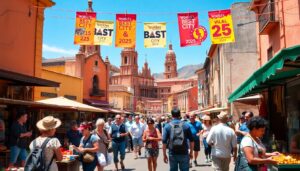
Local Voices: The Complex Reality of Global Fame
While municipal officials celebrate the award, resident perspectives reveal a more nuanced story. In a recent Mexico News Daily column, local journalist María describes living in San Miguel as “like living in a golden cage”—beautiful but increasingly unaffordable for natives.
Housing Crisis Intensifies
Real estate prices have become the most visible impact of San Miguel’s global recognition. Properties listed at real estate offices now routinely display prices in the millions of dollars. Local residents report that houses once owned by their grandparents are now beyond reach of Mexican middle-class salaries.
The displacement extends beyond economics to cultural traditions. The traditional “Friday of Sorrows” celebration, where local homeowners open their doors to visitors during Holy Week, has diminished as fewer Mexican families live in the historic center.
Employment and Economic Benefits
Despite gentrification concerns, many locals acknowledge tourism’s economic benefits. The rental and service sectors provide employment for hundreds of San Miguel natives. Many families, like that of the Mexico News Daily columnist, have covered university expenses through long-term rentals to American expatriates.
New cultural festivals initiated by the international community, such as the Guanajuato International Film Festival and San Miguel’s Chamber Music Festival, have created additional economic opportunities while enriching the city’s cultural offerings.
The Overtourism Challenge: Lessons from Across Mexico
San Miguel’s success story exists within a broader Mexican context of tourism boom challenges. According to recent reports on overtourism in Mexican destinations, San Miguel has experienced a 340% increase in tourism since 2019, now attracting over 2.5 million annual visitors.
The city joins destinations like Tulum, Sayulita, and Playa del Carmen in grappling with:
- Water shortages during peak tourist periods
- Housing affordability crises
- Strain on waste management systems
- Cultural authenticity concerns
What This Means for 2025-2026 Visitors
Planning and Booking Strategy
Post-award travel to San Miguel requires more advance planning than ever before. Visitors should:
- Book accommodations 4-6 months ahead for high season (November-April) and major festivals
- Make restaurant reservations immediately upon arrival, especially for acclaimed spots like Áperi or 1826
- Consider shoulder season travel (May-June, September-October) for better availability and rates
- Explore alternative lodging in nearby neighborhoods like San Antonio or Los Frailes
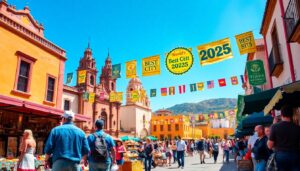
Price Expectations
Budget travelers should anticipate significant price increases across all categories:
- Accommodation: Budget options start around $60/night (up from $35 pre-award)
- Dining: Upscale restaurants now averaging $80-120 per person
- Tours and experiences: Premium offerings like cooking classes ranging $150-250
- Transportation: Private transfers from airports increasing 25-30%
Cultural Events and FASMA 2025
The timing of the award coincides with San Miguel’s Festival of the Arts (FASMA 2025), running August 1-17. This year’s festival features over 100 events, including performances by 13-time Grammy winner Chuchito Valdés and pianist Gile Bae at the historic Angela Peralta Theatre.
According to local reports, festival organizers have implemented crowd management strategies to handle increased attendance, including timed entry systems for popular venues and expanded programming across multiple locations.
Looking Ahead: Sustainable Tourism Initiatives
San Miguel’s municipal government and tourism board are implementing several sustainability measures to manage growth responsibly:
- Visitor quotas for popular sites like the Parroquia de San Miguel Arcángel during peak times
- Community tourism programs that ensure local families benefit directly from visitor spending
- Environmental protections for surrounding natural areas and water resources
- Cultural preservation funds supporting traditional festivals and local artisans
Expert Recommendations for Responsible Travel
Tourism professionals recommend visitors can help maintain San Miguel’s appeal by:
- Choosing locally-owned accommodations and restaurants over international chains
- Learning basic Spanish phrases to engage respectfully with locals
- Respecting cultural traditions and festival protocols
- Supporting local artisans and markets rather than imported souvenir shops
- Participating in community-led cultural experiences
Frequently Asked Questions
Will San Miguel become too crowded to enjoy?
While visitor numbers have increased significantly, San Miguel’s charm remains intact for travelers who plan ahead and visit during shoulder seasons. The city’s expanded cultural programming actually offers more experiences than ever before.
Are prices now comparable to expensive U.S. cities?
Premium experiences in San Miguel now approach U.S. pricing, but budget and mid-range options remain available, especially outside the immediate historic center. Food, local transportation, and many cultural activities continue to offer excellent value.
How can visitors contribute positively to the local community?
Choose locally-owned businesses, tip service workers generously, respect cultural events, and engage with the community beyond tourist-focused activities. Many visitors find volunteering with local organizations creates meaningful connections.
Is the award changing San Miguel’s authentic character?
While gentrification pressures are real, San Miguel maintains its essential character through UNESCO protections, strong local traditions, and an international community that generally respects and contributes to local culture. The key is balanced development that benefits both residents and visitors.
Conclusion: A City at a Crossroads
San Miguel de Allende’s fourth “World’s Best City” title represents both triumph and challenge. The award validates the city’s unique ability to blend colonial charm with contemporary sophistication, but it also intensifies pressures that require careful management.
For travelers, San Miguel remains an extraordinary destination that justifies its global recognition—provided visitors plan accordingly and engage respectfully. For residents, the ongoing challenge lies in preserving the authentic character that made the city special while benefiting from its international appeal.
The next few years will be crucial in determining whether San Miguel can maintain its magical balance between global recognition and local authenticity. Early signs suggest the city is committed to sustainable tourism that honors both its colonial heritage and its modern international community.
Bibliography
- Travel + Leisure World’s Best Awards 2025
- Travel + Leisure Announces 2025 World’s Best Awards
- Rosewood San Miguel de Allende Named Best Hotel in Mexico
- The Golden Cage: Gentrification in San Miguel – Mexico News Daily
- From San Miguel to Tulum, Mexican Towns Are Being Crushed by Overtourism
- San Miguel de Allende Airbnb Revenue Data 2025
- San Miguel de Allende’s UNESCO World Heritage Status
- Mexico News Daily: San Miguel de Allende July News Roundup
- Hotels in San Miguel de Allende – Momondo
- San Miguel de Allende Tourism Potential Analysis – HVS
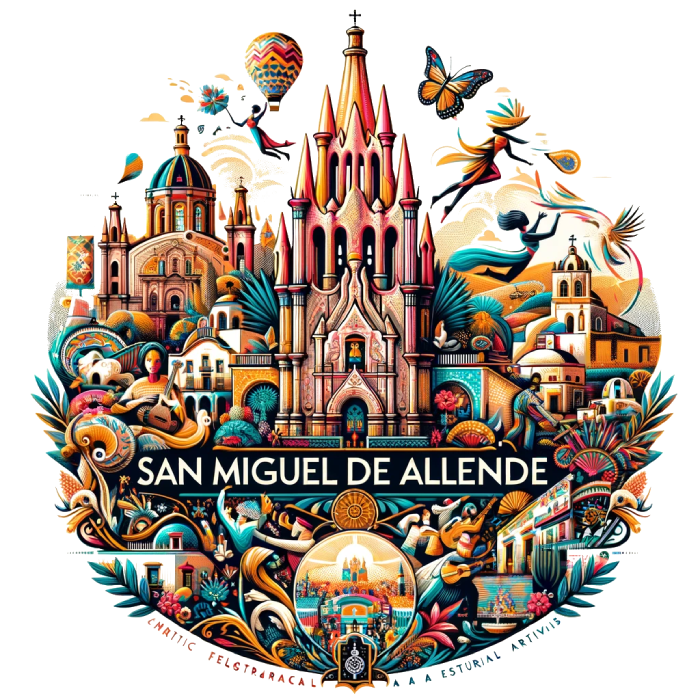


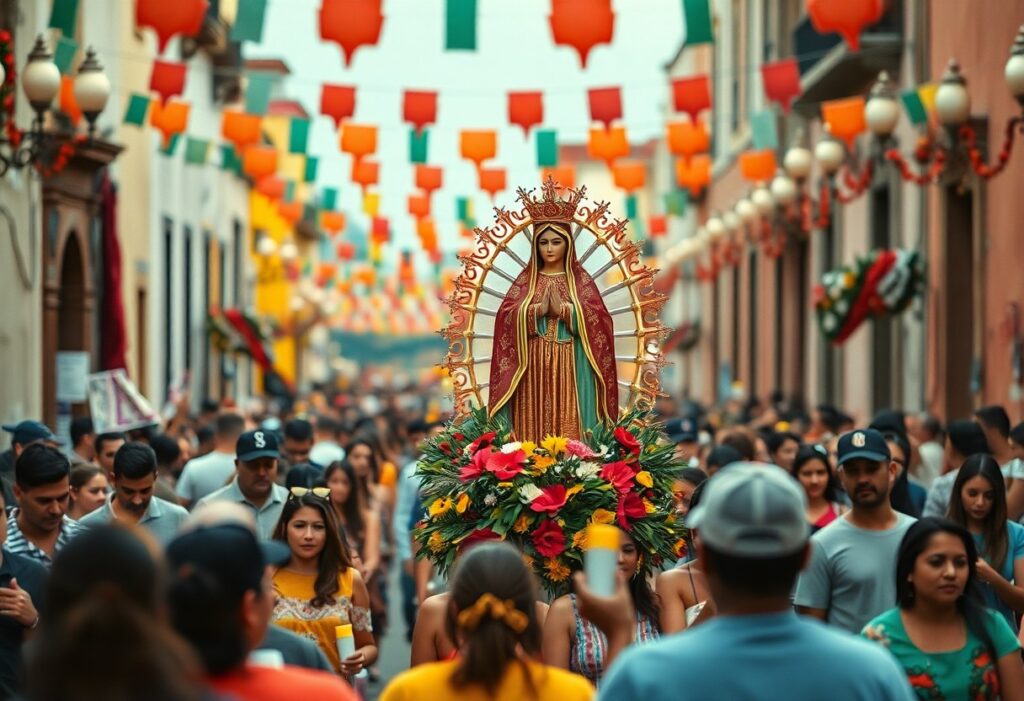
It’s fascinating to see how San Miguel de Allende continues to shine on the global stage, especially with its recent recognition as the World’s Best City. Each time it wins this accolade, I can’t help but think about the implications for both tourists and the locals who call this beautiful place home. It’s like a mixed bag, isn’t it? On one hand, accolades like this can bring much-needed tourism revenue and highlight the rich culture and community spirit that makes San Miguel so special. On the other, there’s that “golden cage” feeling—when a place is so adored that it risks losing its essence to commercialization and over-tourism.
You’ve touched on something really important. The recognition of San Miguel de Allende as the World’s Best City certainly shines a spotlight on its unique culture and beauty. It’s easy to see the allure for tourists—they’re drawn to the vibrant art scene, the stunning architecture, and the warm community vibe. The revenue from increased tourism can undoubtedly benefit local businesses, and I’ve noticed that intersections of culture and commerce can foster innovation and creativity within towns that embrace them.
You highlight a really key aspect of what makes San Miguel de Allende special. The way its cultural richness captivates visitors is something truly magical. The vibrant art scene, for instance, is not just about aesthetics; it reflects the community’s heartbeat. Local artists pour their soul into their work, and that creativity spills over into every corner of the town, from galleries to street performances.
You’ve captured the essence of San Miguel de Allende beautifully. There’s something about how the local culture intertwines with everyday life that creates this unique vibe. I often think about how the art scene serves as a reflection not just of talent, but of resilience and community spirit.
You’ve hit the nail on the head. San Miguel de Allende isn’t just a pretty face; it’s got character, personality, and a flair that pulls you in. You can almost hear the town whispering in a delightful mix of Spanish and English while sipping your morning coffee.
“Absolutely, the synergy between culture and commerce is truly inspiring! If you’re curious to explore more about the charm of San Miguel de Allende and how it captivates so many, check out this insightful guide.”
https://fallinginlovewithsanmiguel.com/transport
It’s so fascinating to read about San Miguel de Allende’s win yet again. I’ve visited a couple of times, and each trip felt like not just a getaway but a deep dive into rich culture and history. It’s incredible to see this little town consistently capture the hearts of so many people worldwide—four times? That says a lot about its charm and allure!
It’s fascinating to see San Miguel de Allende continue to shine on the global stage! Winning the World’s Best City award four times is no small feat. However, I completely resonate with the idea of the “golden cage.” While the recognition brings wealth and tourists, it also transforms the local culture and daily life for residents. I’ve visited a few times and could see the tension between maintaining its charm and catering to the influx of visitors.
It’s fascinating to see San Miguel de Allende recognized again on the world stage, but the term “golden cage” truly resonates with me. This juxtaposition of beauty and complexity often reflects the broader theme of sustainable tourism. While awards and recognition can boost a city’s profile, they also bring challenges like overcrowding and commercialization, which can impact the local culture and environment.
It’s fascinating to see San Miguel de Allende earning the title of World’s Best City for the fourth time, especially considering the challenges that come with such acclaim. This city, rich in history and culture, undoubtedly offers an incredible experience for visitors. However, I can’t help but think about the implications this award has for local residents.
I love how you refer to San Miguel de Allende as the “golden cage” of tourism! It’s a bit like finding the perfect chocolate cake—delicious on the outside, but once you dive in, you might question your decision to finish the whole thing. This award certainly shines a spotlight on its charm, but I can’t help but wonder about the delicate balance between preserving local culture and catering to the influx of visitors.
What a fascinating exploration of San Miguel de Allende and its recent accolade from Travel + Leisure! It’s a powerful reminder of how the allure of a place can captivate both global travelers and locals alike. I can’t help but reflect on the juxtaposition of such a prestigious recognition alongside the title of “golden cage.” This duality unveils layers of complexity in the relationship between tourism and community life.
Your reflection on San Miguel de Allende’s recent recognition and the notion of a “golden cage” really strikes a chord. It’s interesting to consider how tourism can elevate a place’s profile, drawing in visitors and investment, yet at the same time create a tension with the daily lives of those who call it home.
Thank you for your thoughtful insights! If you’re intrigued by the charm of San Miguel de Allende, we invite you to explore more about its unique blend of culture and community in our latest guide.
https://fallinginlovewithsanmiguel.com/tours-and-excursions